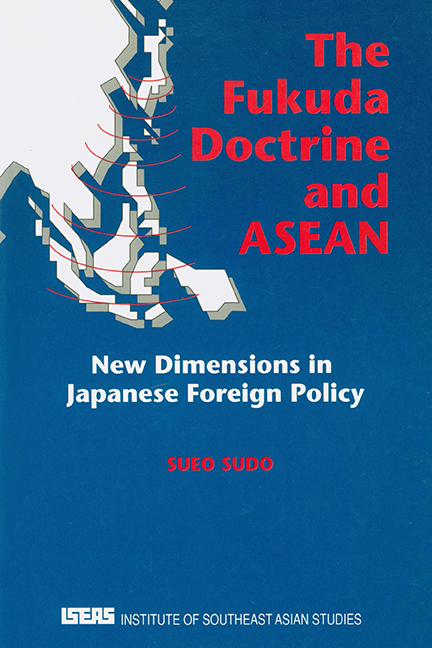Book contents
- Frontmatter
- Dedication
- Contents
- List of Tables
- Preface
- Abbreviations
- Introduction
- chapter one A Framework for Analysing Japanese Policy Towards Southeast Asia
- chapter two Post-war Japan's Re-entry into Southeast Asia
- chapter three Japan's Policy Towards Regional Development
- chapter four External Challenge and Changing Japan-Southeast Asia Relations; 1975–77
- chapter five A Changing Southeast Asia in Japanese Politics
- chapter six Formulating the First Doctrine in Japanese Foreign Policy
- chapter seven Japan's ASEAN Policy, 1977–87
- chapter eight Conclusion
- Appendices
- Bibliography
- Index
- THE AUTHOR
chapter five - A Changing Southeast Asia in Japanese Politics
Published online by Cambridge University Press: 21 October 2015
- Frontmatter
- Dedication
- Contents
- List of Tables
- Preface
- Abbreviations
- Introduction
- chapter one A Framework for Analysing Japanese Policy Towards Southeast Asia
- chapter two Post-war Japan's Re-entry into Southeast Asia
- chapter three Japan's Policy Towards Regional Development
- chapter four External Challenge and Changing Japan-Southeast Asia Relations; 1975–77
- chapter five A Changing Southeast Asia in Japanese Politics
- chapter six Formulating the First Doctrine in Japanese Foreign Policy
- chapter seven Japan's ASEAN Policy, 1977–87
- chapter eight Conclusion
- Appendices
- Bibliography
- Index
- THE AUTHOR
Summary
One of the key factors for understanding the foreign policy of Japan lies in the dynamics of domestic politics. An examination of the decision-making process regarding major foreign policy issues provides an excellent perspective for assessing the workings of the Japanese political system. In addition to the external factors, the Fukuda Doctrine was also influenced by the effect of changing domestic politics on the process of policy-making. Of the internal factors, the ruling party the bureaucracy and the business community each with their own interests and positions, participated in the policy-making process which shaped the direction and substance of the Doctrine. In order to articulate the intentions and motivations of the Japanese Government in proclaiming the Doctrine; therefore, we will examine closely the changes in domestic politics, the Liberal Democratic Party the business community and the concerned bureaucracies in this chapter. In the following chapter, we will analyse the nature of the participants as a prerequisite for examining the process of policy-making.
THE LIBERAL DEMOCRATIC PARTY (LDP)
Since the inception of the party in 1955, the LDP's vote percentage had declined with each subsequent election (see Table 4). The party's most serious loss was in December 1976, which may be attributed to the Lockheed scandal occurring in that year. In the 1976 elections, the LDP for the first time failed to retain a majority and was able to maintain a bare majority only with the entry into the party of several independents. Facing these irreversible trends until 1980, the LDP undertook a general reconstruction of the party at least on the attitudinal base.
According to a survey compiled by the LDP in 1979, the party entered into the second phase, called “Dainiki Jiminto”, in 1976 because the 1955 system had collapsed. There were two major reasons for this collapse: the national goal of the Meiji period; that is, “catching up” modernization had been attained and a new middle class had emerged; and the international environment had improved, that is; the cold war had ended.
- Type
- Chapter
- Information
- The Fukuda Doctrine and ASEANNew Dimensions in Japanese Foreign Policy, pp. 114 - 150Publisher: ISEAS–Yusof Ishak InstitutePrint publication year: 1992

